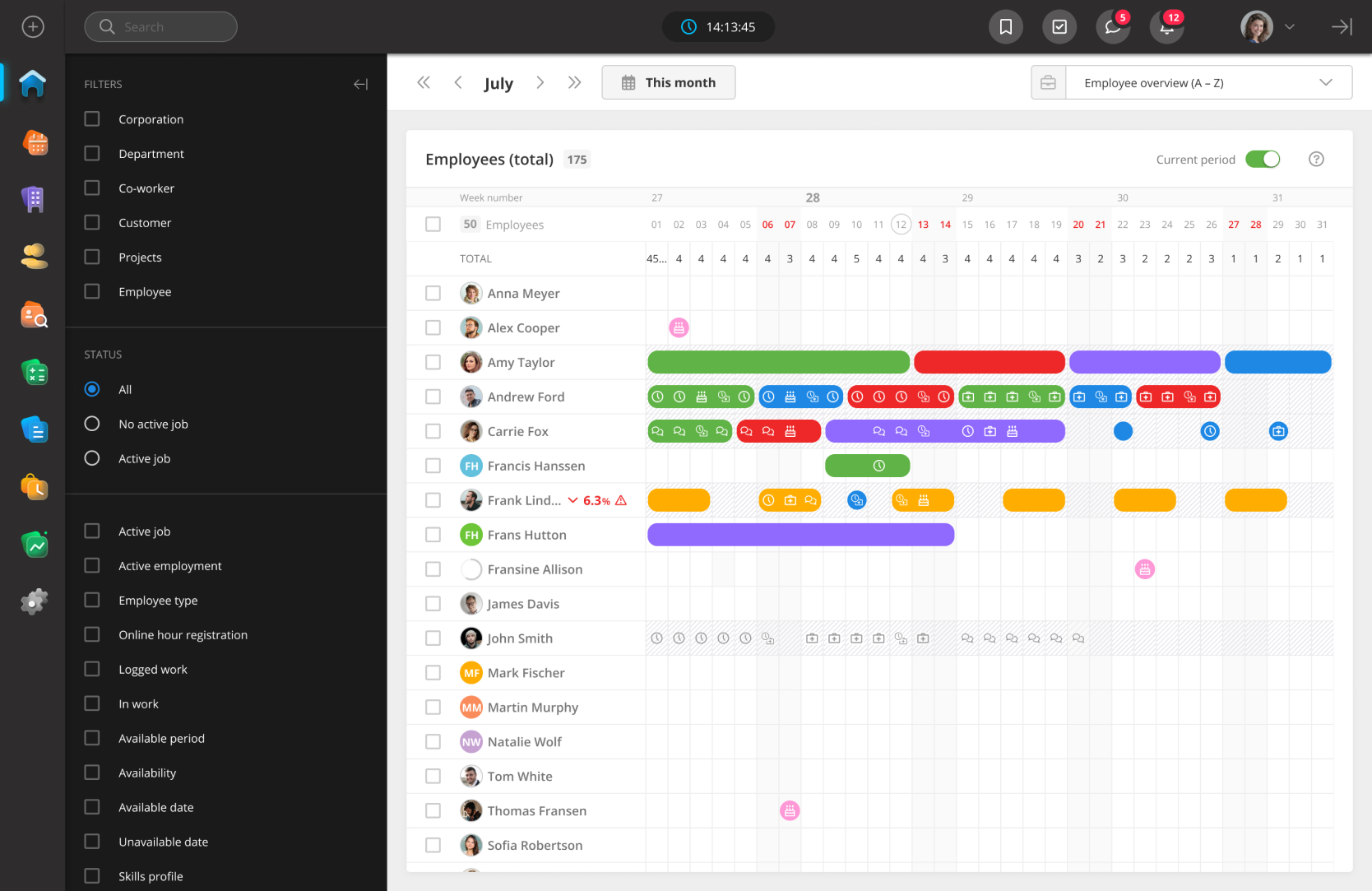Empower Your Team with Scalable Staffing Management Software
Empower Your Team with Scalable Staffing Management Software
Blog Article
Releasing the Power of Information: Enhancing HR Methods With Cutting-Edge Staffing Administration Software Application
In the rapidly developing landscape of human resources, the usage of data has become a pivotal force in forming business success. As companies strive to stay dexterous and affordable, the combination of innovative staffing monitoring software program sticks out as a transformative tool in improving HR procedures. By utilizing the power of data analytics, companies can not just improve their recruitment approaches yet additionally maximize worker retention and productivity. The harmony between data-driven insights and progressed innovation provides a compelling possibility for human resources specialists to revolutionize their strategy in the direction of talent monitoring.
Significance of Data-Driven Human Resources Strategies
Why have data-driven human resources approaches end up being vital in modern-day business operations? In today's fast-paced and competitive business atmosphere, companies are increasingly relying upon data-driven understandings to make educated choices. Data-driven human resources techniques make it possible for companies to enhance their labor force administration, employment procedures, and employee interaction campaigns. By analyzing data connected to staff member performance, turnover rates, and ability voids, human resources departments can identify patterns, forecast future demands, and develop proactive services to attend to obstacles.
Data-driven human resources methods also play an important duty in improving employee contentment and retention. Via the evaluation of staff member responses, performance evaluations, and training results, human resources professionals can customize specific growth plans, recognize high-potential workers, and foster a society of continual knowing and development within the company. Data-driven understandings enable Human resources groups to align their approaches with the general business purposes, guaranteeing that talent monitoring efforts straight contribute to business success.
Advantages of Staffing Monitoring Software Application
Utilizing staffing monitoring software application simplifies the recruitment and onboarding procedures for HR divisions, improving performance and accuracy in ability acquisition. One substantial advantage of this software program is the capability to centralize prospect information, making it quickly obtainable for recruitment groups. By having all candidate information in one area, HR experts can successfully track candidate development, interact effectively with prospective hires, and ensure a seamless employment experience.
Moreover, staffing administration software program typically consists of features such as resume analyzing and keyword matching, which assist in swiftly recognizing top candidates that match the task needs. This automation reduces the time invested in hand-operated return to evaluating, allowing HR personnel to concentrate on even more critical tasks. staffing management software. Additionally, these systems can integrate with task boards and social networks systems, increasing the reach of work posts and attracting a diverse pool of candidates
Additionally, analytics and reporting tools within staffing administration software application give beneficial understandings right into employment metrics, such as time-to-fill and cost-per-hire. This data-driven approach enables human resources groups to make informed decisions, optimize employment strategies, and boost total working with procedures. By leveraging these benefits, companies can enhance their skill purchase efforts, enhance candidate experience, and inevitably construct a solid labor force.
Enhancing Recruitment Processes With Information
Using data-driven approaches in employment processes has become significantly essential for companies seeking to enhance their ability procurement results. By leveraging data, companies can make even more educated decisions throughout the employment lifecycle, inevitably causing better hires and improved retention prices. One essential way information improves recruitment procedures is by enhancing job posts based on insights from previous successful hires. Assessing metrics such as the resource of top skill, time to fill up placements, and prospect quality can aid recruiters customize task descriptions to bring in the best prospects effectively.
Furthermore, information analytics can improve the testing and selection procedure by identifying patterns in prospect credentials and performance indications. This enables employers to concentrate their efforts on prospects that are most likely to prosper in the role, saving time and sources. In addition, data-driven recruitment methods can help decrease prejudice in the hiring process by supplying unbiased insights into prospect credentials and potential fit within the organization. Generally, incorporating information into recruitment processes encourages organizations to make smarter employing choices and construct high-performing teams.
Improving Employee Retention Through Technology

One way review technology can boost staff member retention is via the usage of worker interaction platforms. These platforms allow for real-time feedback, acknowledgment, and interaction between employees and management, fostering a society of recognition and support. Additionally, technology can make it possible for tailored discovering and advancement programs tailored to specific worker requirements and career desires, increasing work fulfillment and loyalty.
Moreover, information analytics tools can help companies identify patterns and patterns connected to staff member turnover, allowing them to take positive measures to attend to potential concerns before they rise. Generally, by leveraging technology successfully, organizations can develop a more helpful and engaging job setting that motivates staff members to stay and expand within the firm.
Optimizing Workforce Efficiency With Information

Via the evaluation of click this information, human resources divisions can identify patterns and fads that influence efficiency degrees. For instance, by tracking staff member job hours and job conclusion rates, companies can optimize work timetables to ensure that tasks are efficiently dispersed amongst employee. Furthermore, data can expose ability voids within the labor force, enabling human resources to execute targeted training programs that improve worker abilities and overall productivity.
Moreover, data-driven efficiency examinations make it possible for supervisors to provide certain comments and support to employees, fostering a society of constant renovation. Overall, leveraging information to optimize workforce productivity is a calculated method that encourages companies to accomplish their goals efficiently Look At This and successfully.
Final Thought
In final thought, using sophisticated staffing management software application can considerably improve HR approaches by leveraging the power of information. By incorporating data-driven employment processes, boosting employee retention via technology, and optimizing workforce performance, organizations can improve their procedures, make even more informed choices, and ultimately accomplish greater success in handling their human resources. Accepting these technical improvements is important in the ever-evolving landscape of personnel administration.
Data-driven HR approaches allow companies to optimize their labor force administration, recruitment processes, and staff member engagement campaigns. By evaluating information related to worker efficiency, turnover rates, and skill gaps, Human resources divisions can identify trends, predict future needs, and establish aggressive solutions to attend to obstacles.

Report this page